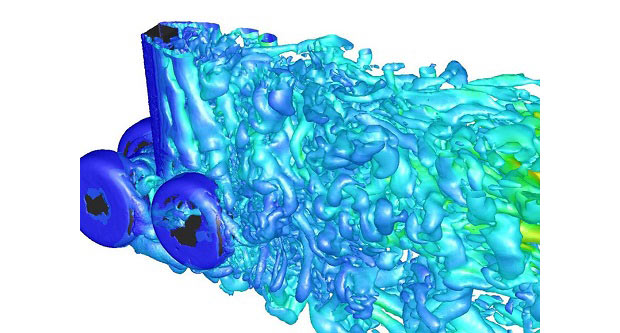Model Turbulence Efficiently
Latest News
December 1, 2015
 Dear Desktop Engineering Reader:
Dear Desktop Engineering Reader:
The ANSYS “Simulating Turbulence Accurately and Efficiently” Web page makes no bones about modeling turbulence: It’s the biggest factor limiting accurate computer simulation of engineering flows. It’s a multiscale problem that eats computer resources, and no one model or modeling approach solves all turbulent flows. So, what do you do?
Today’s Check it Out link takes you to three papers that explore various turbulence problems engineers encounter plus the technologies and approaches that can help you take on fluid dynamics’ most challenging area. It’s great reading.For those less familiar with the issues and science of simulating turbulence, these papers are a terrific primer. For those grappling with turbulence modeling, here’s a wealth of insights that can help you choose the right turbulence model to match your application while optimizing your computational resources.
Begin your exploration by reading your way down to the bottom of the page where you’ll find three links. The top link, “Advanced Turbulence Modeling Methods Provide Accurate, Efficient Results in Any Fluid Flow Application,” is the go-to paper for a quick sweep of how and where engineers in various industries apply turbulence modeling techniques. Well-illustrated, this article fills in any blanks in your understanding of the technology.
Next up is “Turbulence Modeling for Engineering Flows” (also linked via the image on the upper right of the main page). This is a 25-page, technology-rich briefing on the complexities and the application of turbulence models. It explains the current status of turbulence models used in CFD (computational fluid dynamics) codes and looks at some promising new methods under development. Extremely well illustrated and with a hefty reference list, this is the must-read for those steeped in turbulence modeling already.
“Best Practices: Scale-Resolving Simulations in ANSYS CFD,” the last link, is an update of an e-book that can only be described as a definitive resource. Particularly interesting is how SRS (scale-resolving simulation) models let you resolve all or a part of the turbulence spectrum in the numerical domain.
 This image shows a detached delayed-eddy simulation of flow over an aircraft landing gear capturing the turbulent flow structures created by the landing gear structure. ANSYS Fluent performed the computation. Image courtesy of ANSYS Inc.
This image shows a detached delayed-eddy simulation of flow over an aircraft landing gear capturing the turbulent flow structures created by the landing gear structure. ANSYS Fluent performed the computation. Image courtesy of ANSYS Inc.Aside: Not a part of this page, but something interesting, is a blog post called “Taking Laminar-Turbulent Transition Modeling to the Next Level.” Read it here.
“Simulating Turbulence Accurately and Efficiently” covers ANSYS’ turbulence modeling technologies in a manner that informs you without marketing hype. It is fully absorbing and well worth your time. Hit today’s Check it Out link to see for yourself.
Thanks, Pal. – Lockwood
Anthony J. Lockwood
Editor at Large, Desktop Engineering
Check out “Simulating Turbulence Accurately and Efficiently” here.
Subscribe to our FREE magazine, FREE email newsletters or both!
Latest News
About the Author
Anthony J. Lockwood is Digital Engineering’s founding editor. He is now retired. Contact him via [email protected].
Follow DE





